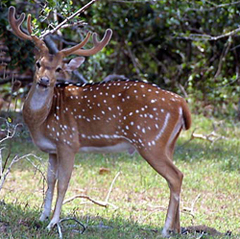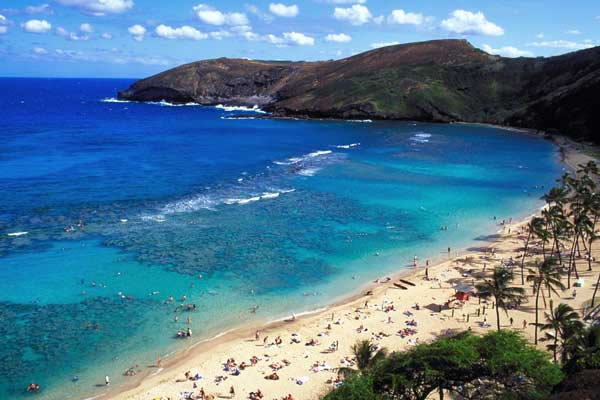We are used to stories of deer populations getting out of control and calls for hunters to help relieve the stress. But this one’s a little different. First, it takes place on one of the most exotic and popular tropical destinations in the world. Second, the deer aren’t native … they aren’t even whitetails.
From the story on Fox News:
 Deer can swim, but not very far. When they showed up for the first time on the Big Island of Hawaii, mystified residents wondered how they got there.
Deer can swim, but not very far. When they showed up for the first time on the Big Island of Hawaii, mystified residents wondered how they got there.
The island is some 30 miles southeast of Maui, where non-native axis deer are plentiful.
Hawaii wildlife authorities think someone dropped a few from a helicopter on the northern tip of the island. And tracks along the southern coast indicate deer were pushed into the ocean from a boat and forced to paddle ashore.
Whether they arrived by air or sea, wildlife managers want to eradicate them to avoid a repeat of the destruction seen on other islands where they ate through vineyards, avocado farms and forests where endangered species live.

Officials estimate that there are 100 deer on the northern and southern ends of the Big Island. A government-funded group is leading efforts to get rid of them before they breed.
“They didn’t get here by themselves, so the people who brought them over did so and have done it many times,” said Jan Schipper, the group’s project manager.
People have reported seeing deer on the Big Island for a while, but it wasn’t until a motion-sensor camera captured a photo of one last year that their presence was confirmed.
Axis deer, called chital in their native India, are similar in size to whitetail deer found in the continental U.S. Tigers and leopards keep axis deer numbers reasonable in India, but the deer population is growing 20 percent to 30 percent per year in Hawaii because there aren’t any natural predators — except for humans.
The deer first came to Hawaii in the 1860s as a gift from Hong Kong to the monarch who ruled at the time, King Kamehameha V. They were first taken to Molokai Island.
In the 1950s, some deer were taken to Maui as part of post-World War II efforts to introduce mammals to different places and increase hunting opportunities for veterans, said Steven Hess, wildlife biologist with the U.S. Geological Survey. Biologists believed they could improve the environment by introducing species that didn’t naturally exist, he said.
The experiment has had devastating, unforeseen consequences in Hawaii, where plants and animals evolved in isolation over millions of years and lack natural defenses against introduced species.
In Maui, deer have caused $1 million in damage during the past two years for farmers, ranchers and resorts, according to a county survey. They spent half that amount during the same time trying to eradicate the animals. On Lanai, deer that eat everything from Hawaii’s native ebony tree, the lama, to a native olive tree and a now-extinct mint helped turn a rich native forest into a desert-like landscape so desolate people compare it to the moon.
Big Island hunters like Tony Sylvester welcome the axis deer as a new source of meat.
There are no native land mammals in Hawaii except for a bat. Big Island hunters, who hunt to supplement their diet, say the deer should stay because the gift to the former king was for all of Hawaii.
Sylvester suspects other hunters brought the deer from nearby islands to retaliate against government agencies and conservationists for converting vast tracts of hunting ground to forest restoration. He said he understands the concern for the environment and the need to protect the forest, but he said the deer can coexist if managed properly.
Read the rest of the story at Fox News:

